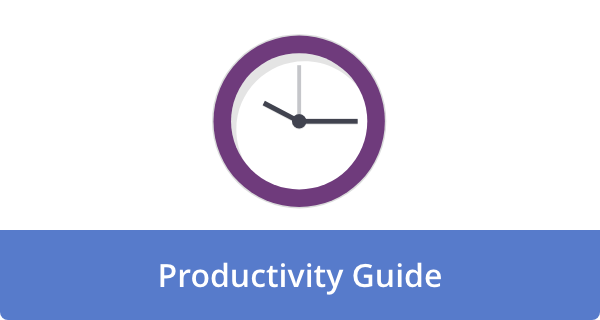

Spring is a time of rejuvenation, so it’s the perfect time to rev up your productivity. After all, as the world shakes off the winter chill, we can shed old habits and embrace effective time management. In the same way that a well-tended garden yields a bountiful harvest, a well-managed schedule yields greater results.
So, are you ready to maximize your potential this spring? It’s time to roll up our sleeves and cultivate time management habits to transform your productivity.
Preparing the Soil: Laying the Groundwork for Success
An avid gardener understands the importance of preparing the soil before planting seeds. The goal is to create a rich, nourishing environment where seeds can grow and flourish. In terms of productivity, this means assessing current habits and building a solid foundation for better time management.
Think about it this way: if you were to grow tomatoes on concrete, you would be sorely disappointed. In the same way, if you build a productive life on chaos and distraction, your efforts will likely fail.
- Clear the weeds: Identify and eliminate distractions. Like weeds rob your plants of vital nutrients, distractions steal your mental energy and time. So, what are your weeds? Is it endless scrolling on social media? Are you constantly interrupted by those pesky notifications? Time-tracking apps reveal where your precious hours are wasted, allowing you, like a cultivator, to pull weeds, break up compacted soil, and loosen weed roots.
- Enrich the soil: Equip yourself with the right tools. Gardeners wouldn’t head to the plot without their trusty tools, would they? For productivity, you also need the right tools. Whether you choose a digital productivity app, a structured planner, or a dedicated workspace, this tool will be invaluable. You need to create a fertile mental environment for your creativity to flourish. As a result, your productivity seeds will grow in perfect compost.
Selecting the Right Seeds: Setting Goals and Priorities
An experienced gardener selects seeds based on the climate, soil type, and desired harvest. To manage your time effectively, you must set clear and realistic goals that align with your lifestyle and goals.
- Plant with purpose: Define your priorities with SMART goals. In all honesty, “I want to be more productive” is about as specific as a weather forecast five years from now. Instead, set goals that are Specific, Measurable, Achievable, Relevant, and Time-bound. It doesn’t matter whether you’re working on your novel, learning a new language, or tackling that overflowing inbox – clarity in purpose ensures you’ll get results.
- Diverse planting: Balance urgent and long-term goals. Your garden thrives when you grow various crops, and so will your day. In other words, don’t just focus on the urgent tasks that scream for attention. You should also plant seeds for the future, contributing to your long-term vision.
Watering and Nurturing: Consistency and Habit Formation
Without regular watering and care, you can’t expect a seed to grow into a thriving plant. The same is true for good time management habits. Consistent effort and attention are required.
- Establish a routine: Create daily rituals for productivity. Morning routines are like gentle rains that wake up your garden. They set the tone for the rest of the day. It might be exercise, a few minutes of journaling, then quiet meditation. Decide what works for you and make it a non-negotiable element of your daily routine.
- The Power of small actions: Consistent efforts lead to growth. In the same way, watering plants daily leads to significant growth, but small, consistent efforts also result in substantial growth. You can accomplish those daunting tasks by breaking them down into manageable steps. It’s the small wins that signal progress that we should celebrate.
Pruning and Weeding: Eliminating Inefficiencies
Even the most meticulously planned gardens require regular pruning to maintain a healthy condition. When we eliminate unnecessary activities and refine our workflow, productivity flourishes.
- Trim the excess: Learn to say no. Don’t take on commitments that don’t serve your goals. When it comes to time management, learning to say no is essential. This is similar to pruning away dead branches so that new growth may flourish.
- Optimize your growth: Use time management techniques. Tools like the Pomodoro Technique, time-blocking, and batching similar tasks add specialized value to your productivity garden. With them, you’ll be able to focus, maximize efficiency, and accomplish more in less time.
Basking in the Sunshine: Finding Balance and Rest
Despite their need for sunlight, plants can suffer from too much exposure. To live a productive life, finding a balance between effort and rest is important.
- Embrace breaks: Schedule time to recharge. Breaking up your day with short breaks is like blowing a refreshing breeze through your garden. You can improve your focus and energy by walking outside, stretching, or breathing deeply.
- Celebrate progress: Acknowledge your achievements. As a gardener who takes pride in blooming flowers, I appreciate your accomplishments on your journey toward better time management.
Harvesting the Rewards: Reaping the Benefits of Good Time Management
Eventually, a garden will yield a bountiful harvest. Likewise, disciplining your time will increase productivity, reduce stress, and make you feel more accomplished.
- Reflect and adjust: Adapt your approach. Assess what strategies worked best and refine your approach if necessary. In the same way farmers rotate their crops to maintain soil health, you should adapt your approach to time management.
- Share the harvest: Teach others what you’ve learned. By sharing productivity tips with colleagues, friends, or family, you reinforce your habits and create a supportive environment for growth.
Conclusion: Cultivating a Productive Mindset for Every Season
While spring is a time for new beginnings, the habits you develop now can serve you throughout the year. When you approach productivity like a garden and carefully plant, nurture, and refine your approach, you can cultivate a sustainable, thriving system.
So grab your metaphorical gardening gloves, sow the seeds of discipline, consistency, and mindful planning, and watch your productivity garden thrive. After all, the most beautiful gardens are lovingly tended, season after season.
FAQs
Why is spring a good time to focus on time management?
Spring brings a sense of new beginnings and growth. It is common for people to feel a surge of energy and motivation after winter’s slower pace. As a result, it’s easier to establish new routines and break bad habits. The longer daylight hours also provide more opportunities for productivity and personal growth.
As spring cleaning is often on the agenda, it’s also a good time to declutter your schedule.
What are some common time management mistakes I should avoid?
The following are common pitfalls;
- Procrastination. Putting off tasks until the last minute creates stress and rush work.
- Multitasking. Even though multitasking seems efficient, it often results in a lack of focus and poor-quality work.
- Lack of prioritization. We waste our time on less critical tasks by not knowing what’s important.
- Overcommitting. If you say yes to everything, you will burn out and end up unfulfilled.
- Poor planning. Disorganization and late deadlines are common consequences of not planning your day or week.
- Not taking breaks. Working continuously without taking breaks can lead to fatigue and decreased productivity.
- Ignoring time wasters. Spending too much time on social media, checking emails, and attending useless meetings can waste valuable time.
How can I prioritize my tasks effectively?
Several methods can be used to help;
- The Eisenhower Matrix. Sort tasks into four quadrants: Urgent and Important, Important but Not Urgent, Urgent but Not Important, and Neither Urgent nor Important. The first two quadrants should be your focus.
- The Pareto Principle (80/20 Rule). Determine which 20% of tasks yield 80% of the results and prioritize them.
- ABC Method. Each task should be assigned a letter (A for most important, B for moderately important, C for least important) and then addressed in that order.
- Daily or weekly planning. Start each day or week by creating a list of tasks and prioritizing them according to deadlines and importance.
How can I overcome procrastination this spring?
The following strategies may help;
- Break down large tasks. Break them down into smaller, more manageable steps.
- Set deadlines. Creating deadlines creates a sense of urgency, even for non-urgent tasks.
- Use the “two-minute rule.” If a task takes less than two minutes, do it immediately.
- Eliminate distractions. You should turn off notifications, close unnecessary tabs, and find a quiet workplace.
- Reward yourself. Whenever you finish a task, reward yourself with something small.
- Identify your procrastination triggers. The more you know what makes you procrastinate, the more strategies you can devise to avoid it.
What are some practical time management tools I can use?
Several tools can be helpful;
- Digital calendars (Calendar, Google Calendar, Outlook Calendar) allow you to keep track of deadlines, schedule appointments and set reminders.
- Task management apps (Todoist, Trello, Asana) allow you to create to-do lists, organize projects, and collaborate with others.
- Time tracking apps (RescueTime, Toggl). Be aware of how you spend your time and identify time-wasting activities.
- Note-taking apps (Evernote and OneNote) allow users to capture ideas, create checklists, and organize information.
- Focus apps (Forest, Freedom). To improve concentration, you should block distracting websites and apps.
- Physical planners. Those who prefer paper can find a physical planner to be very useful.
Image Credit: Lisa From Pexels; Pexels











John Rampton
John’s goal in life is to make people’s lives much more productive. Upping productivity allows us to spend more time doing the things we enjoy most. John was recently recognized by Entrepreneur Magazine as being one of the top marketers in the World. John is co-founder and CEO of Calendar.